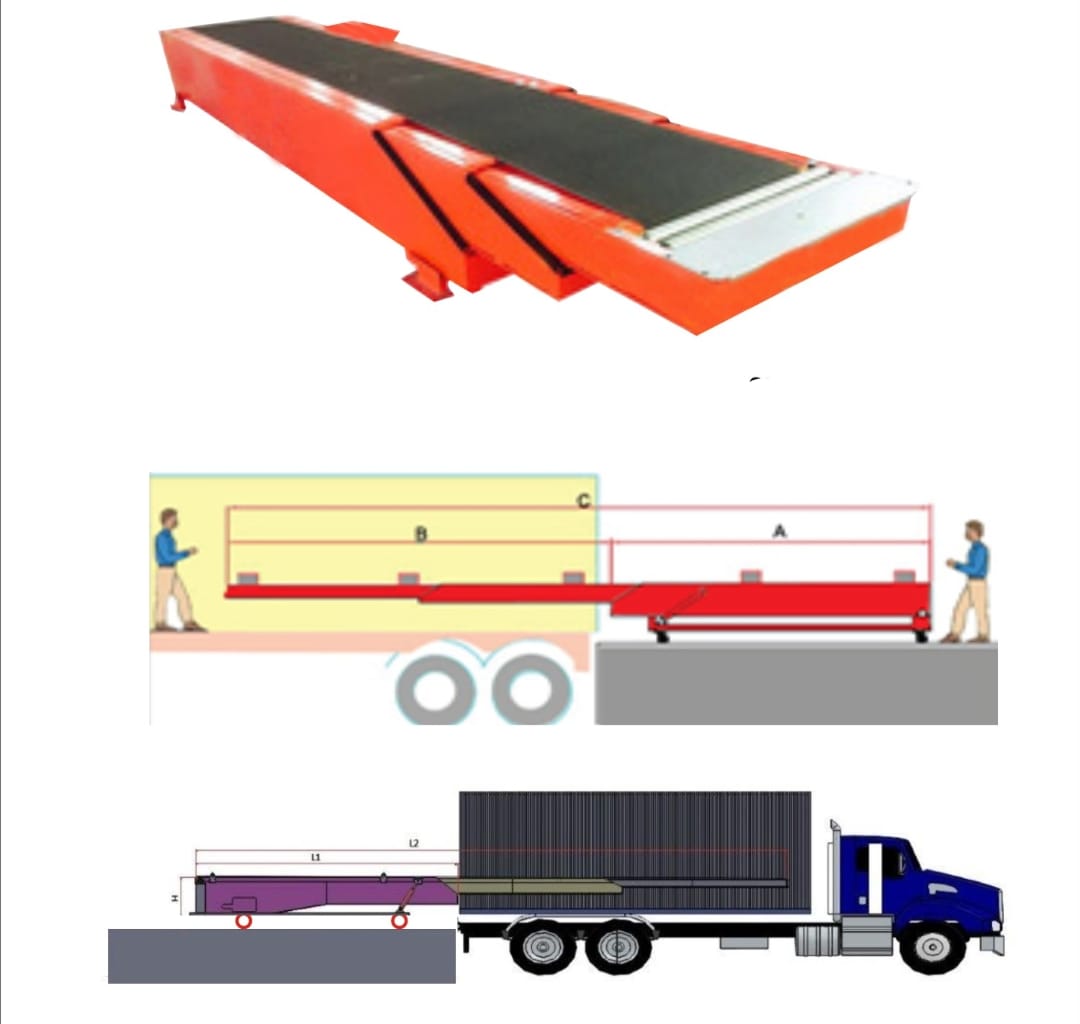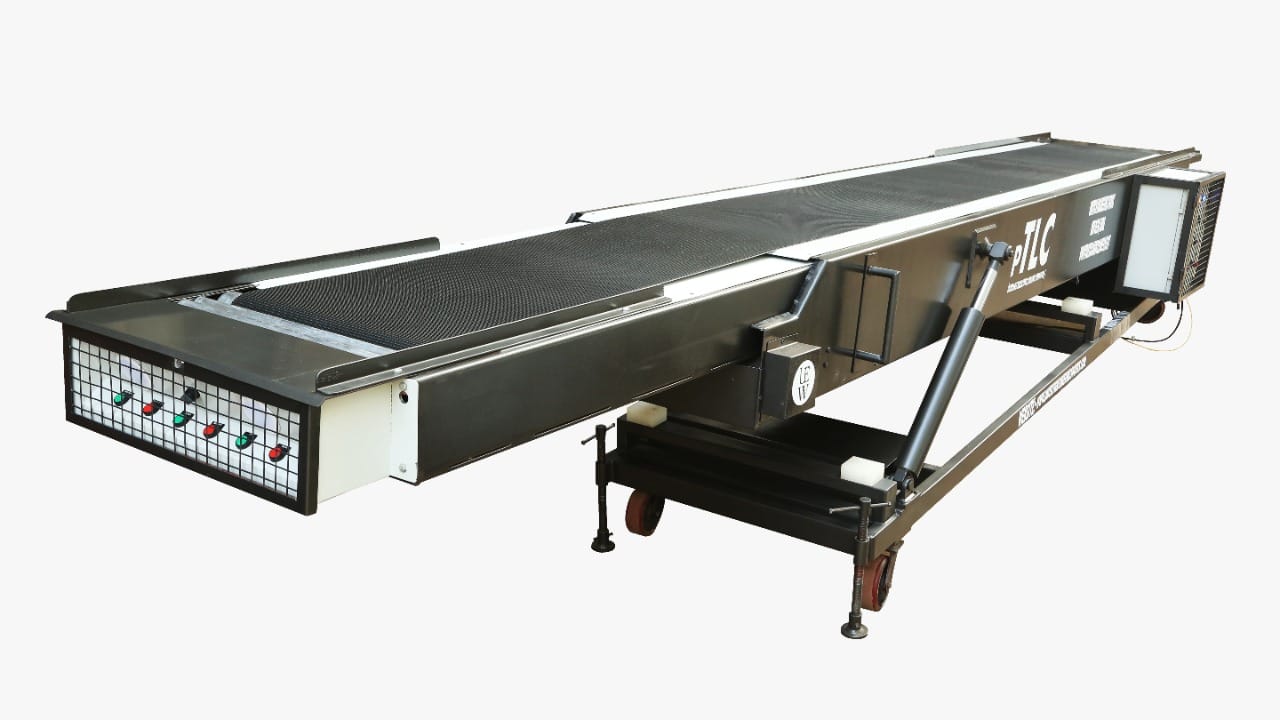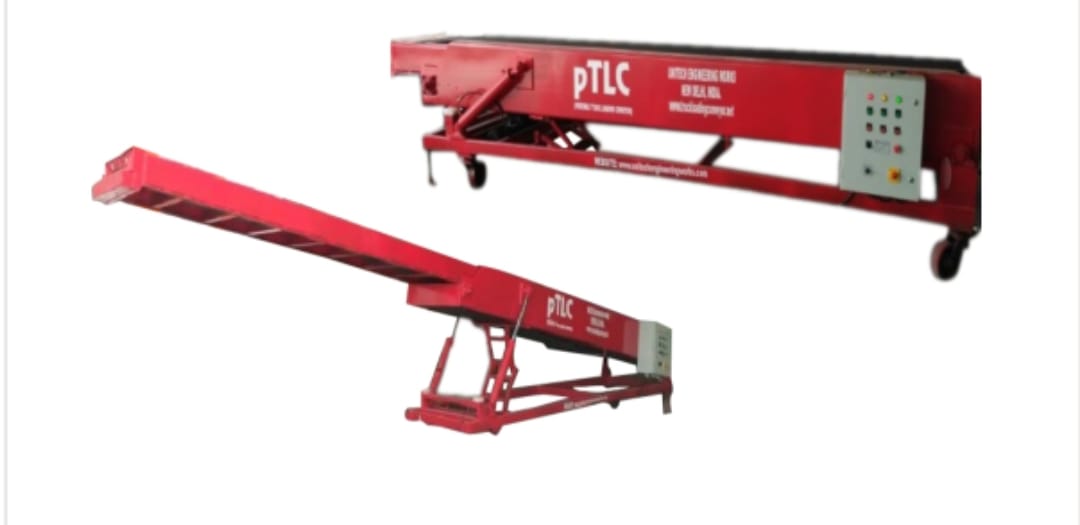portable Telescopic Truck Loading Unloading Conveyor
A Portable Telescopic Truck Loading Unloading Conveyor is a flexible, extendable conveyor system designed to load and unload goods efficiently from trucks or containers. It is portable, meaning it can be easily moved and positioned where needed. The telescopic feature allows it to extend and retract, adjusting the length as required to reach inside trucks, optimizing loading/unloading processes. Ideal for warehouses, distribution centers, and logistics companies, it increases productivity by reducing manual labor and minimizing loading times. These conveyors are typically equipped with adjustable heights and safety features for operator convenience.
benefits
1. Increased Efficiency and Productivity
- Speedy Loading and Unloading: Telescopic conveyors extend into the truck, allowing for quicker loading and unloading of goods. This reduces manual handling and speeds up the overall process.
- Labor Savings: By automating much of the loading/unloading, fewer workers are needed, or their roles become less physically demanding, leading to labor cost savings.
- Continuous Flow: Unlike manual loading, which can have breaks and interruptions, telescopic conveyors ensure a steady flow of goods, enhancing productivity.
2. Enhanced Safety
- Reduced Physical Strain: Workers don’t need to carry heavy goods into or out of trucks manually. This minimizes strain-related injuries.
- Minimized Accidents: With fewer goods being manually handled, the risks of dropping or mishandling are reduced, making the workspace safer.
- Ergonomic Design: Many telescopic conveyors have adjustable heights and angles, so workers can set them at comfortable levels, further reducing strain and risk.
3. Flexibility and Portability
- Mobile and Adjustable: Portable telescopic conveyors can be moved between loading docks and can often extend or retract based on truck size, making them ideal for various shipping and receiving needs.
- Multi-Dock Use: Facilities with multiple loading/unloading bays can use a single unit across several docks, maximizing utility without the need to buy multiple conveyors.
- Variety of Applications: These conveyors handle a range of products, from loose goods like parcels to boxed items, making them adaptable for various industries such as retail, logistics, and manufacturing.
4. Time Savings and Faster Turnaround
- Shorter Dock Occupation Time: Trucks spend less time at the dock because the conveyor speeds up the loading/unloading process, enabling faster truck turnaround and maximizing fleet efficiency.
- Improved Delivery Speed: The faster process helps ensure that goods are loaded promptly, reducing bottlenecks in shipping and receiving schedules.
5. Cost Efficiency
- Reduced Need for Additional Equipment: With the telescopic conveyor, companies may require fewer forklifts or manual handling equipment, reducing costs associated with purchasing, maintaining, and operating additional machinery.
- Lower Operational Costs: The streamlined process minimizes downtime, labor hours, and the need for extensive manual handling, resulting in lower operational costs.
6. Enhanced Space Utilization
- Efficient Use of Loading Dock Space: Telescopic conveyors can extend only as much as needed into a truck, allowing optimal use of limited dock space.
- Retractable Design: When not in use, these conveyors retract and often occupy minimal space, keeping loading areas organized and clutter-free.
7. Improved Ergonomics for Workers
- Adjustable Heights and Angles: Many telescopic conveyors can be adjusted to different levels, ensuring that workers don’t have to bend, lift, or stretch excessively, improving ergonomics and reducing fatigue.
- Better Working Conditions: With the conveyor doing the bulk of the transporting, workers handle fewer loads manually, leading to less fatigue and a more manageable work environment.
8. Environmentally Friendly Option
- Energy Efficiency: Many telescopic conveyors are designed to be energy efficient, often using efficient motors and automation to reduce energy consumption.
- Reduction in Transport Emissions: By speeding up the truck loading/unloading process, trucks spend less time idling at the dock, which reduces fuel usage and emissions.
9. Scalability for Growing Businesses
- Adaptable to Increased Load Requirements: As a business grows, telescopic conveyors can adapt to larger volumes without needing additional loading docks, helping to scale operations cost-effectively.
- Multi-Purpose Use: These conveyors can often be modified to handle different types of cargo, making them useful across various stages of business expansion or seasonal changes in load types.
10. Reduced Product Damage
- Gentle Handling: The telescopic conveyor gently transports goods, reducing the risks of goods being dropped or damaged compared to manual handling.
- Minimized Handling Points: The conveyor’s direct transfer of goods reduces the need for extra handling points, minimizing product damage risks during loading/unloading.




